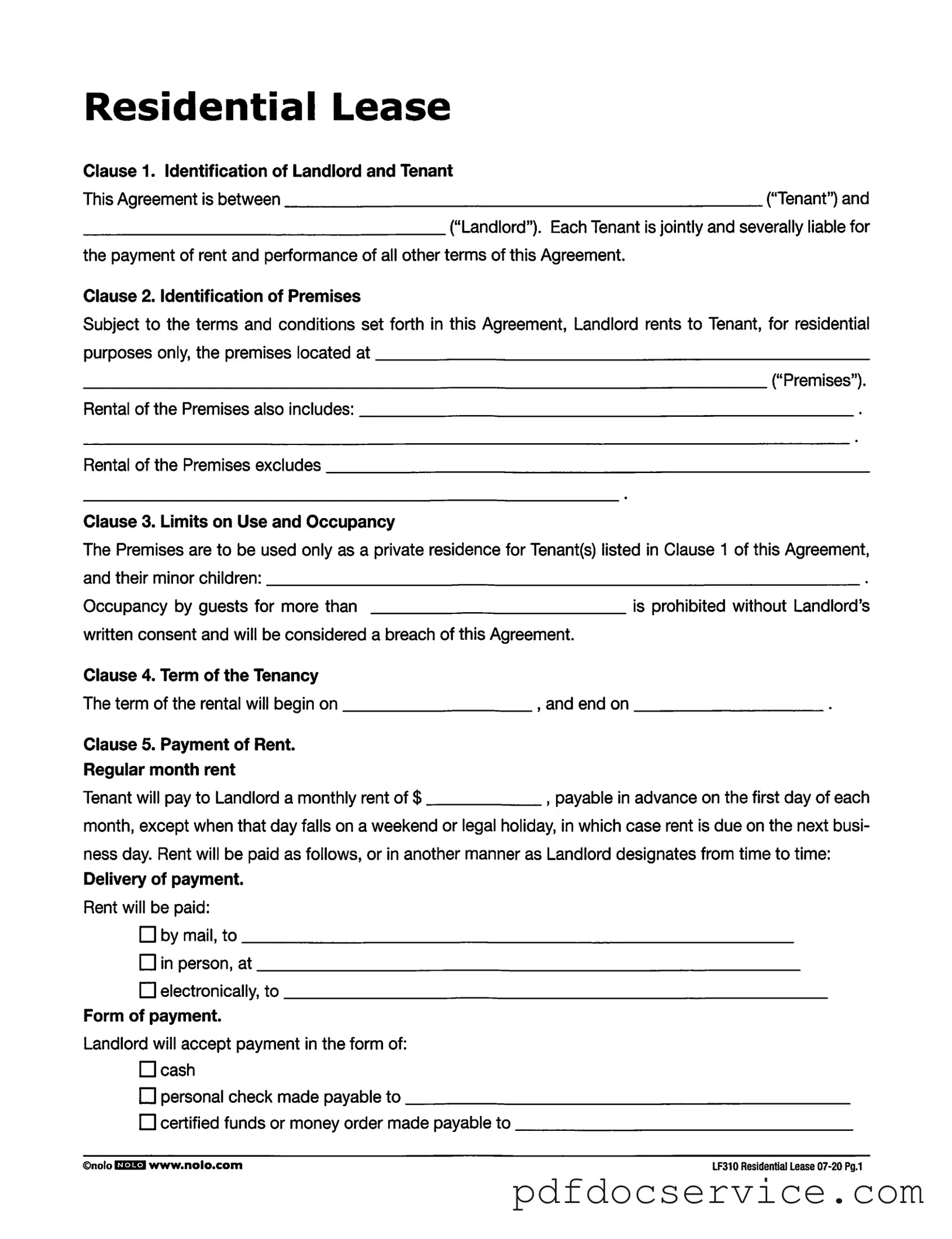The LF310 Residential Lease form is a legal document that outlines the terms and conditions of a rental agreement between a landlord and tenant. It serves to protect the rights of both parties by clearly defining responsibilities, payment terms, and rules regarding the use of the rental property.
Who are the parties involved in the lease?
The lease identifies two main parties: the landlord and the tenant. Each tenant listed in the agreement is jointly responsible for paying rent and adhering to all terms of the lease. This means that if one tenant fails to pay rent, the others are still liable for the full amount.
What are the limits on the use of the premises?
The premises rented under this agreement are intended solely for residential purposes. Only the tenants listed in the lease and their minor children may occupy the property. Any guests staying for an extended period without the landlord's consent could be considered a breach of the agreement.
How is rent paid according to the LF310 Residential Lease?
Rent is due on the first day of each month. If this day falls on a weekend or holiday, payment is expected on the next business day. Tenants can pay rent in various ways, including:
-
By mail
-
In person
-
Electronically
Accepted forms of payment include cash, personal checks, certified funds, money orders, credit or debit cards, and electronic funds transfers.
What happens if the rent is paid late?
If rent is not paid in full within a specified number of days after the due date, a late charge will apply. This charge consists of a fixed amount plus an additional fee for each day the rent remains unpaid. However, the total late charge for any month will not exceed a certain limit, as agreed upon in the lease.
What are the rules regarding security deposits?
Upon signing the lease, tenants must pay a security deposit. This deposit cannot be used to cover the last month's rent without the landlord's written consent. After the tenant vacates the premises, the landlord has a specific timeframe to return the deposit or provide an itemized statement detailing any deductions made from it.
Who is responsible for paying utilities?
Tenants are generally responsible for all utility charges associated with the rental property. However, the lease may specify certain utilities that the landlord will cover. It’s important for tenants to clarify which utilities they need to pay to avoid confusion.
Can tenants sublet the premises?
